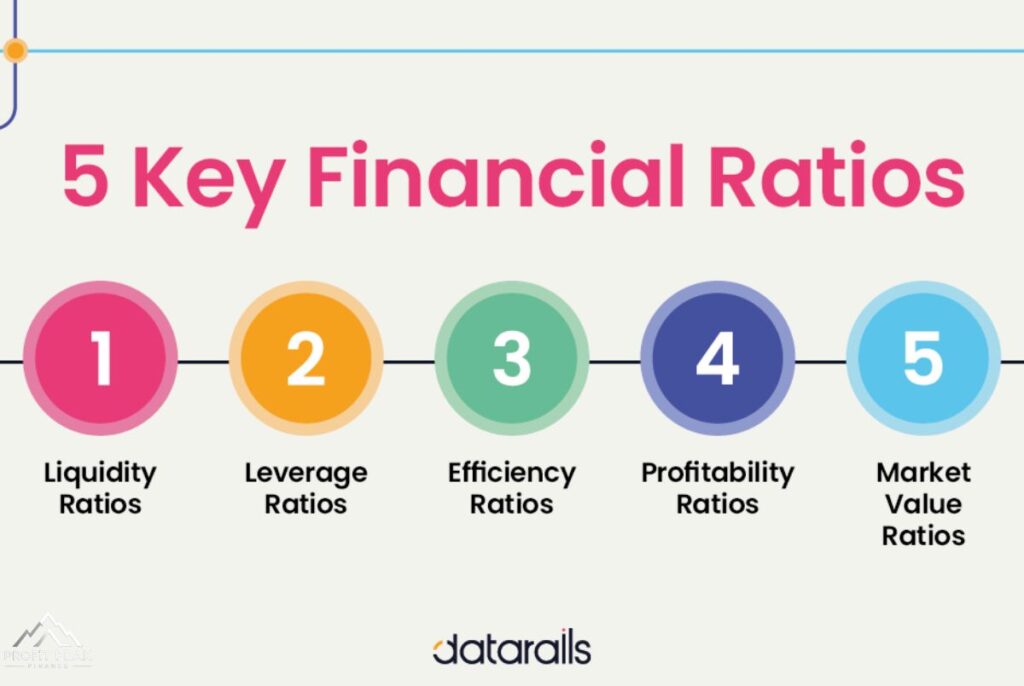The streaming revolution has disrupted the traditional television landscape, and Roku has emerged as a prominent force in this paradigm shift. With its innovative business model and user-friendly platform, the company has captured the attention of cord-cutters and investors alike.
However, as the streaming market becomes increasingly crowded, questions arise about Roku’s ability to maintain its momentum and justify its valuation. In this comprehensive analysis, we delve into Roku’s business model, financial performance, competitive landscape, and future prospects, providing investors with a well-rounded perspective on this streaming giant’s stock.
Roku’s Innovative Business Model
At its core, Roku operates a two-pronged business model: hardware and platform services. The company’s hardware offerings include streaming players and smart TVs, which serve as gateways to its highly popular streaming platform. However, Roku’s true value proposition lies in its platform business, which generates revenue through advertising, subscriptions, and content distribution partnerships.
Unlike traditional media companies, Roku does not produce its own content; instead, it leverages its vast user data to deliver targeted advertising and facilitate content discovery. This data-driven approach has proven to be a game-changer, allowing Roku to monetize its user base effectively while offering a seamless streaming experience.
Moreover, Roku has begun diversifying its revenue streams by venturing into original content production. In 2022, the company launched its first original series, “Roku Originals,” further solidifying its position as a comprehensive streaming platform. This strategic move not only enhances user engagement but also opens up new avenues for monetization through licensing and distribution deals.
As an example of Roku’s financial prowess, the company’s Q1 2023 earnings report showcased a remarkable 28% year-over-year growth in platform revenue, reinforcing the strength of its business model.
Read As: Dedicated to the Eastern United Building Specialists
Key Financial Metrics and Forecasts

To assess Roku’s investment potential, it’s crucial to analyze its financial performance and valuation metrics. Here’s a breakdown of some key figures:
Revenue Trends
Roku has consistently demonstrated impressive revenue growth, with a compound annual growth rate (CAGR) of 37% over the past five years. In 2022, the company reported total revenue of $3.1 billion, marking a 13% increase from the previous year.
Profitability Measures
Despite its rapid growth, Roku has yet to achieve consistent profitability. However, the company has shown improvement in its gross margins, which currently stand at 59%. Additionally, Roku’s adjusted EBITDA (Earnings Before Interest, Taxes, Depreciation, and Amortization) margin has been steadily increasing, reaching 12% in 2022.
Valuation Multiples
When compared to its peers in the streaming and media industry, Roku’s valuation multiples appear relatively attractive. The company’s price-to-sales (P/S) ratio stands at 3.8, while its enterprise value-to-revenue (EV/Revenue) multiple is 3.2, both of which are lower than the industry averages.
Analyst Projections
Wall Street analysts remain optimistic about Roku’s future performance. The consensus estimate projects the company’s revenue to grow by 20% in 2023 and 18% in 2024. Additionally, analysts expect Roku to achieve profitability by 2025, with an estimated earnings per share (EPS) of $0.75.
Competitive Landscape for Streaming
While Roku has established itself as a prominent player in the streaming market, it faces intense competition from various fronts:
- Smart TV Brands: Companies like Samsung, LG, and Vizio have integrated streaming capabilities directly into their smart TVs, potentially reducing the need for standalone streaming devices like Roku’s players.
- Big Tech Companies: Tech giants such as Amazon (Fire TV), Google (Chromecast), and Apple (Apple TV) have their own streaming platforms and devices, leveraging their vast resources and ecosystems to compete with Roku.
- Streaming Service Providers: Major streaming services like Netflix, Disney+, and Hulu have amassed significant user bases and are investing heavily in original content, posing a threat to Roku’s content distribution partnerships.
To differentiate itself and maintain market share, Roku has focused on providing a neutral platform that aggregates content from various sources. Additionally, the company’s extensive user data and targeted advertising capabilities give it a competitive edge in monetizing its user base.
Opportunities and Risks Ahead
As the streaming industry continues to evolve, Roku faces both opportunities and risks that could shape its future trajectory:
Growth Opportunities
- International Expansion: While Roku has a strong presence in the US market, there is significant potential for growth in international markets, particularly in regions with high broadband penetration and increasing demand for streaming services.
- Operating Leverage: As Roku’s user base expands, the company’s platform business model allows for greater operating leverage, potentially leading to improved profitability and margins.
- Content Partnerships: By strengthening its relationships with content providers and securing exclusive distribution rights, Roku can enhance its value proposition and attract more users to its platform.
Risks and Challenges
- Content Spending Demands: To remain competitive, Roku may need to invest heavily in original content production, which could strain its financial resources and impact profitability in the short term.
- Pricing Power Concerns: As competition intensifies, Roku may face pressure to reduce its platform fees or advertising rates, potentially impacting its revenue growth and margins.
- Economic Headwinds: Advertising revenue, a significant component of Roku’s business model, is susceptible to economic downturns and cyclical trends, posing a risk to the company’s financial performance.
- Regulatory Scrutiny: With increasing concerns over data privacy and antitrust issues, Roku may face regulatory challenges that could impact its ability to collect and monetize user data.
SWOT Analysis

To summarize Roku’s strengths, weaknesses, opportunities, and threats, let’s examine a SWOT analysis:
Strengths
- Pioneering position in the streaming market
- Data-driven advertising and content discovery capabilities
- Neutral platform aggregating content from various providers
- Strong brand recognition and user base
Weaknesses
- Lack of proprietary content
- Reliance on advertising revenue
- Limited presence in international markets
Opportunities
- Expansion into original content production
- Growth potential in emerging streaming markets
- Partnerships with content creators and distributors
Threats
- Intense competition from tech giants and smart TV brands
- Potential regulatory changes impacting data collection and advertising
- Economic downturns affecting advertising revenue
Industry Trends and Growth Projections
The streaming industry is rapidly evolving, and it’s essential to consider the broader market trends that could impact Roku’s future prospects:
- Cord-Cutting Acceleration: As more consumers ditch traditional cable and satellite TV services, the demand for streaming platforms like Roku is expected to continue growing.
- Rise of Connected TV Advertising: Advertisers are increasingly shifting their budgets toward connected TV (CTV) platforms, recognizing the potential for targeted advertising and measurable results.
- Content Fragmentation: With the proliferation of streaming services, consumers are facing content fragmentation, potentially driving the need for aggregation platforms like Roku’s.
- 5G and Broadband Expansion: The rollout of 5G networks and improved broadband infrastructure could further fuel the adoption of streaming services, benefiting platforms like Roku.
According to industry analysts, the global streaming market is projected to reach $184.3 billion by 2027, growing at a CAGR of 21.3% from 2020 to 2027.
Read Also This: Mastering Raiser 6795 EDI Payments: A Comprehensive Guide for U.S. Businesses
Growth Opportunities and Investment Thesis

Based on the analysis of Roku’s business model, financial performance, competitive landscape, and industry trends, several growth opportunities emerge:
- International Expansion: Roku has significant room for growth in untapped international markets, where it can leverage its platform and user data capabilities to drive adoption and monetization.
- Content Partnerships and Aggregation: By strengthening its relationships with content providers and acting as a neutral aggregator, Roku can position itself as a go-to destination for streaming enthusiasts.
- Advertising and Data Monetization: As connected TV advertising continues to gain traction, Roku’s data-driven advertising capabilities and large user base position the company to capitalize on this growing revenue stream.
- Original Content Production: While in its early stages, Roku’s foray into original content production could potentially unlock new revenue streams and enhance user engagement, further solidifying the company’s position as a comprehensive streaming platform.
Considering these growth opportunities, coupled with Roku’s attractive valuation metrics and the overall positive industry outlook, a compelling investment thesis emerges for the stock.
However, it’s important to note that Roku’s success is not guaranteed, and investors should carefully weigh the potential risks and challenges, such as
intense competition, regulatory uncertainties, and the company’s ability to maintain its competitive edge.
Conclusion
Roku has carved out a unique position in the rapidly evolving streaming landscape, leveraging its innovative business model and data-driven capabilities to captivate users and investors alike. While the company faces intense competition and challenges, its strong brand recognition, user base, and potential for growth in areas like international expansion, content partnerships, and advertising monetization present compelling opportunities.
From a financial perspective, Roku’s impressive revenue growth, improving profitability metrics, and attractive valuation multiples relative to its peers suggest that the company could be an attractive investment option for those bullish on the streaming industry’s prospects.
However, it’s crucial for investors to remain vigilant and closely monitor Roku’s ability to navigate the competitive landscape, maintain its pricing power, and effectively monetize its user base while managing costs and potential regulatory hurdles.
Ultimately, Roku’s success will hinge on its ability to continue innovating, forging strategic partnerships, and delivering a superior streaming experience that resonates with consumers worldwide.
As the streaming wars intensify, Roku’s prospects as a streaming giant will be put to the test, but its unique position and growth potential make it a stock worth keeping a close eye on for investors seeking exposure to this dynamic and rapidly evolving industry.
Key Takeaways:
- Roku’s innovative business model, combining hardware and data-driven platform services, positions it as a disruptor in the streaming industry.
- Financial metrics, including impressive revenue growth and improving profitability, along with attractive valuation multiples, suggest potential upside for the stock.
- Intense competition from tech giants, smart TV brands, and streaming service providers presents challenges that Roku must navigate effectively.
- Growth opportunities in areas like international expansion, content partnerships, advertising monetization, and original content production could fuel further growth.
- Investors should carefully weigh the risks and opportunities, considering Roku’s ability to maintain its competitive edge and capitalize on industry trends.
While past performance is no guarantee of future success, Roku’s innovative approach and strategic positioning make it a compelling streaming stock to watch, especially for investors bullish on the industry’s long-term prospects.












